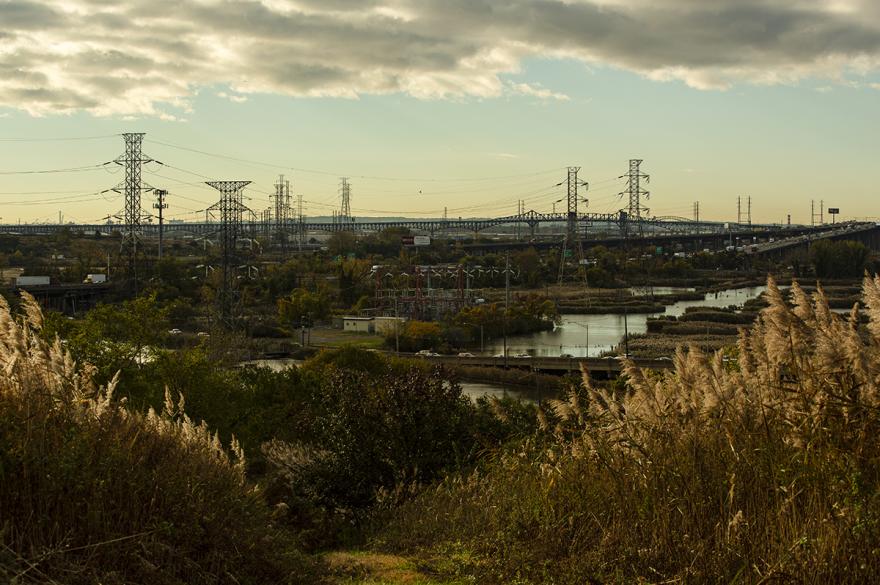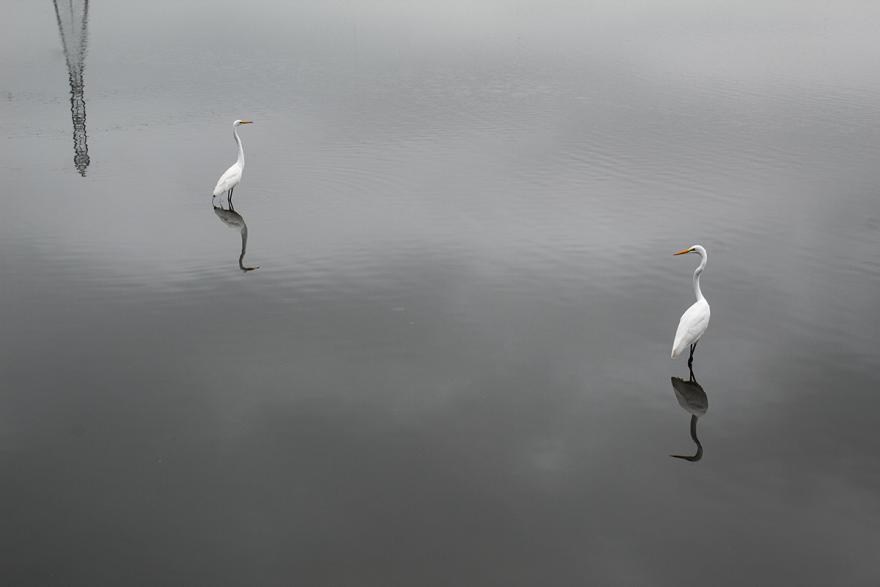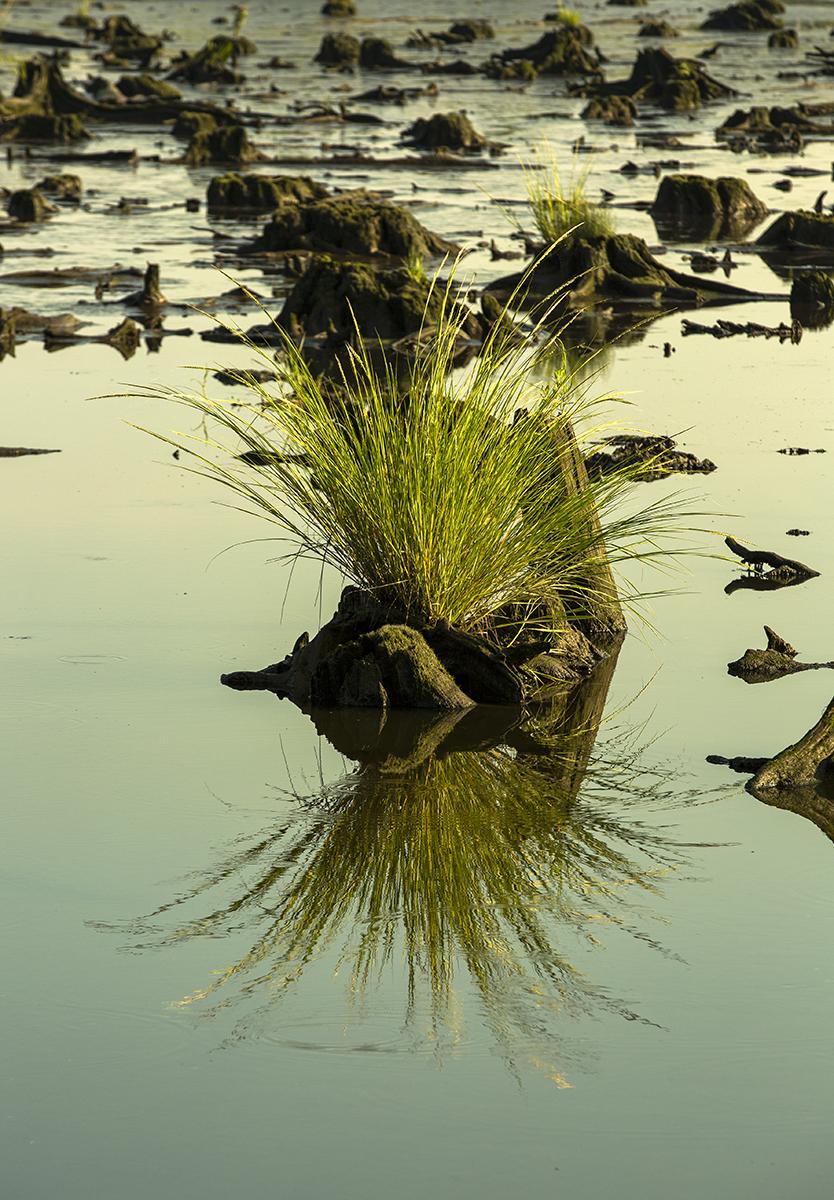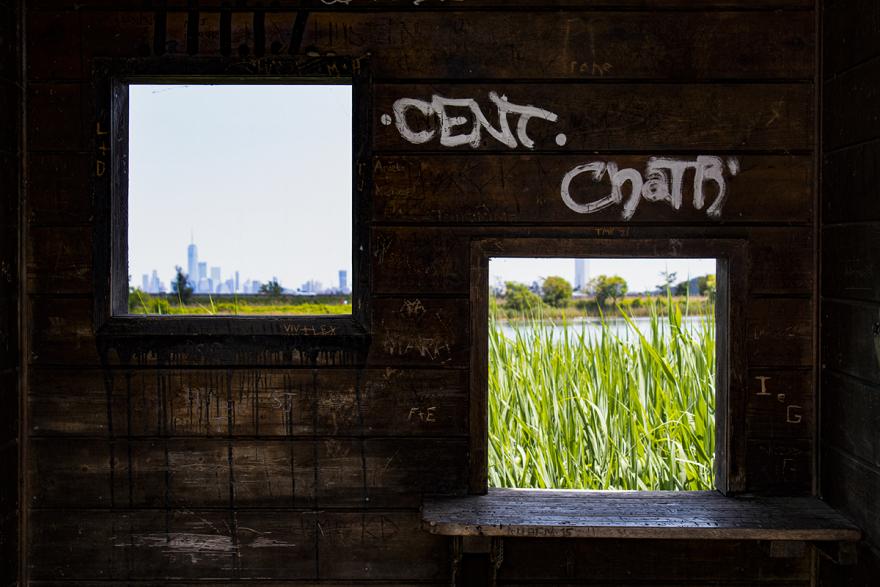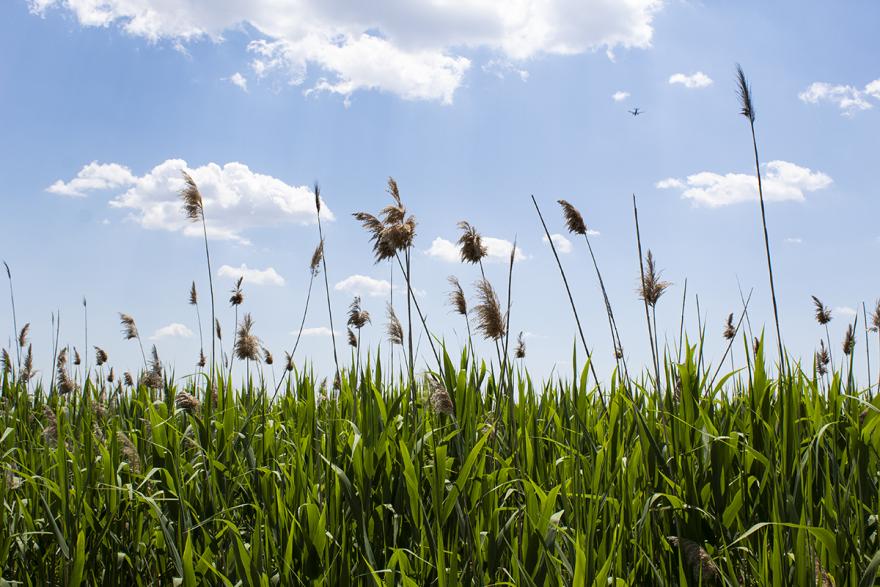Emilia Lorenz
Encroachment of the New Jersey Meadowlands
The thirteen square miles of wetlands stretching from Teterboro to Kearny, have been significantly stripped for the purpose of early farming, dump sites, and transportation routes to and from New York City. For decades the Meadowlands were viewed as a “wasteland” that should be reclaimed and made “useful.”
This series combats the historical perspective of a frontier. The belief that it is expansive and the conquering of such land was equally justified as it was inevitable. The Meadowlands is home for over 500 species of animals, acting as an essential breeding and resting ground for migrating birds – we have deemed them as insignificant.
In the Meadowlands, the sounds of birds are interrupted by those coming from nearby highways and railroads. The cityline, high tension towers and layers of infrastructure in the distance are juxtaposed against the foreground of wildlife and landscape. Planes constantly fly overhead, alongside seagulls and other waterfowl. Animals are left to live in makeshift homes, such as a man-made bird house or a drawbridge, due to the confiscation of natural shelters. I felt the urgent sense to photograph those moments of an ecosystem striving to persevere despite all that challenges it. Walking through the wetlands, I took my camera to capture the moments of beauty and serenity and all that threatens to disrupt it.
I’ve been warned about climate change consistently throughout my education in New Jersey, however, I have yet to see a situation where local ecosystems are prioritized over economic gain. Encroachment of the New Jersey Meadowlands, a documentary project incorporating both photography and videography from 2021 to 2022, highlights the tension between mankind and vital habitat. This series emphasizes the pressure put on the Meadowlands and how in spite of that it remains a beautiful refuge, fighting for its inhabitants. It’s time that we fight for them too.
